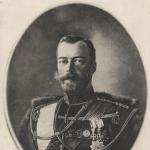Electric field: electric charge division and electroscope. Outline of a lesson in physics (grade 8) on the topic: Divisibility of electric charge
Preview:
Basyrov Ilsur Minniakhmetovich
Physics teacher
MBOU "Izluchinskaya OSSHUIOP №1"
town Izluchinsk, Nizhnevartovsky district,
KhMAO-Yugra, Tyumen region.
Physics lesson in grade 8 on the topic:
"Divisibility electric charge. Electron. The structure of atoms "
The purpose of the lesson:
Educational:Convince students of the divisibility of electric charge. Give an idea of the electron as a particle with the smallest electric charge. To acquaint students with the structure of the atom, the planetary model of the atom according to Thomson and Rutherford.
Developing: to systematize and generalize students' knowledge about the concept of "electric charge", "gravity";
develop attention and curiosity by performing experiments in explaining new material;
to form the ability to explain the surrounding phenomena occurring in nature.
Educational: develop sustained attention when explaining new things theoretical material; develop correct speech, using physical terms; achieve high activity and class organization.
Demos:
- Divisibility of electric charge.
- Transfer of charge from a charged electroscope to an uncharged one using a trial ball.
- Planetary model of the atom according to Rutherford (1C: tutor in physics).
- Table " Periodic system chemical elements Mendeleev".
- The lesson is accompanied by a presentation"Electron. The structure of electric charge.
Lesson plan:
- Organizing time;
- Repetition of the studied material;
- Learning new material;
- Consolidation of the studied material;
- Homework.
During the classes:
- Organizing time.
Hello guys! Today I will teach you a physics lesson. My name is Ilsur Minniakhmetovich, I am at your service today. I think that we will work together! I don't need to be afraid and everyone else too. At the end of the lesson, everyone will receive their marks. And as you can see, only the worthy have gathered here! So... Let's all get started.
- Repetition of the studied material.
Let's review what we learned in the previous lesson. Let's have a short independent work. I will hand out the cards to you, and in your notebooks for test work, complete the following tasks. You have 3 minutes.
Option 1
- How do objects with opposite charges interact with each other? Give examples.
- How do two glass rods rubbed with silk interact with each other?
Option 2
- Is it possible to charge only one of the contacting bodies during electrification by friction? Justify the answer.
- A negatively charged body attracts a ball suspended on a thread, and a positively charged body repels it. Can we say that the ball is charged? If so, what is the sign of the charge?
III. Learning new material.
Plan for presenting new material:
- Divisibility of electric charge;
- Electron;
- Models of the atom that existed before early XIX in;
- Rutherford's experiments;
- Rutherford's nuclear model of the atom.
On the board write the topic: Divisibility of electric charge. Electron. The structure of the atomPresentation(Electron. Structure of electric charge.ppt)
- Divisibility of electric charge. Demonstration of experience: Let's take two electroscopes, one of which we will charge with an ebonite stick worn on wool, we will connect both electroscopes with a conductor.
Demonstrating the experience of transferring charge from a charged electroscope to an uncharged one, the question to the class is:
Do you think that electric charge can be divided indefinitely? (Students' guesses are heard.)
Questions arise: how long can the initial charge be crushed? Is there a limit to such division? School electrometers are not very sensitive instruments. Pretty soon, their charge will decrease so much that the electrometer will no longer record it. To answer these questions it is necessary to carry out more complex and precise experiments. They were conducted by two physicists: the Russian scientist Abram Fedorovich Ioffe and the American scientist Robert Milliken.
Learning action electric field on the smallest charged dust grains of zinc, which could only be observed with a microscope, he established a very important pattern: the charge of the dust grains changed only an integer number of times (by 2, 3, 4, etc.) from some of its smallest values. This result can only be explained in this way: only the smallest charge (or an integer number of such charges) is attached to or separated from a grain of zinc.
Question to the class:
So, can bodies or particles have a charge 1.5 times greater or less than the smallest charge?
- Electron. From this experience, it was concluded that there is a particle in nature that has the smallest charge, which no longer divides. This particle is called electron .
An electron has mass and energy. The electron mass is 9.1 10-31 kg. The charge is usually denoted by the letter q . The unit of electric charge is one pendant (denoted by 1 C).This unit is named after the French physicist Charles Coulomb, who discovered the basic law of the interaction of electrically charged bodies.
The value of the electron charge was determined by the American scientist Robert Milliken. He found that the electron has a negative charge equal to 1.6 * 10-19 Cl.
We know that all bodies are made up of molecules, and molecules are made of atoms. So there is an electron inside the atom. He must be somewhere! And if there is an electron inside the atom, then what charge will the atom have? Correctly negative. Is this possible??? And we have established that there are two types of charge - negative and positive. And at the same time, like charges repel each other, and unlike charges attract. So if an atom has a negative charge, what will happen? That's right, all atoms will repel each other! There was no such molecular structure! And the atom must be charged. No. So what do you think, only one electron is sitting there in the inside of the atom? That's right, no! Every action has a reaction. A negative charge has a positive counteracting charge. And what should the positive charge be equal to in order for the total atom to be neutral, that is, not to have a charge? Correctly, the charge of a positive particle should be equal to +1.6 * 10-19 Cl. And if so, then everything suits us! Correctly? How interesting is the atom?
- Models of the atom that existed before the beginning of the 19th century.At the beginning of the century in physics there were very different and often fantastic ideas about the structure of the atom.
For example, the rector of the University of Munich, Ferdinand Lindemann, in 1905 stated that "the oxygen atom has the shape of a ring, and the sulfur atom has the shape of a cake."
Lord Kelvin's theory of the "vortex atom" continued to live, according to which the atom is arranged like smoke rings emitted from the mouth of an experienced smoker.
But most physicists were inclined to think that J. J. Thomson was right: an atom is a uniformly positively charged ball with a diameter of 10-8 cm, inside which negative electrons float, the dimensions of which are 10-11 see Thomson himself was unenthusiastic about his model.
John Stoney back in 1891 suggested that electrons move around the atom, like satellites of planets. The Japanese physicist Hantaro Nasaoka said in 1903 that the atom is a kind of complex astronomical system, like the ring of Saturn.
The question of the structure of the atom was also studied by Russian physicists: Pyotr Nikolaevich Lebedev and the famous populist scientist Nikolai Morozov.
None of the supporters of the idea planetary atom could not confirm by experience. Ernest Rutherford set up such an experiment in 1909.
- Rutherford's experience . English physicist Ernest Rutherford, exploring
radiation of radioactive substances, Special attention given to radiation,
made up of positively charged particles called
alpha particles. He found that each a-particle, falling on a screen of zinc sulfide, causes a flash of light. Having experienced scattering in golden
foil, and - the particles hit, then into the screen and registered using
microscope.
According to Thomson's model of the atom, a-particles would have to pass freely through gold atoms, and only individual a-particles could be slightly deflected in electric field electron. Therefore, it was to be expected that a beam of a-particles, when passing through a thin foil, would slightly spread out at small angles. Such small-angle scattering was indeed observed, but quite unexpectedly it turned out that approximately one a-particle out of 20,000 incident on gold foil with a thickness of only 4 10-5 see, goes back towards the source.
It took Rutherford several years to finally understand such an unexpected large-angle scattering of a-particles. He came to the conclusion that the positive charge of an atom is concentrated in a very small volume at the center of the atom, and not distributed throughout the atom, as in Thomson's model.
- Rutherford's nuclear model of the atom. Rutherford proposed a nuclear ("planetary") model of the atom:
The atoms of any element consist of a positively charged part, called kernels;
The nucleus consists of positively charged elementary particles - protons (later it was found that neutral neutrons)
Electrons revolve around the nucleus, forming the so-calledelectronic shell.
IV Consolidation of the studied (presentation):
- Can electric charge be divided infinitely? Does electric charge have a divisibility limit?
- What is the name of the particle with the smallest charge? What do you know about the charge and mass of an electron?
- What particles make up the nucleus?
- How are positive and negative ions formed?
- Calculate the number of protons, neutrons and electrons in a sodium atom.
- One electron is separated from a helium atom. What is the name of the remaining particle? What is its charge?
- Consideration of the periodic table. (Table of Mendeleev Periodic system of chemical elements of D.I. Mendeleev.html)
V Homework
- §29.30 textbook; answer the questions for the paragraph.
2. Exercise 11 No. 1.2.
Teacher material
Robert Andrus Milliken (1868-1953)
Offer to teach physics in preparatory school Ohio took Millikan by surprise. On the one hand, additional earnings seemed not at all superfluous, and on the other hand, his knowledge in the field of physics was very meager. However, the proposal was accepted, and from 1891 to 1893. Milliken taught physics, filling in the gaps in his knowledge from textbooks. Aberdeen College awarded him a master's degree for this course, and the course notes sent by the leadership to King's College brought Millikan a scholarship, thanks to which Robert was able to continue his education.
He spent one summer at the University of Chicago with Albert Michelson, a connoisseur of physical experiment. After that, Millikan finally decided to become a physicist. After defending a dissertation for the competition degree Ph.D. in physics, Milliken went to Europe. After a trip to America, Robert became Michelson's assistant and worked at the University of Chicago. It was then that he created the first American physics textbooks for high schools and colleges.
Soon Millikan was captivated by the most interesting, but extremely difficult problem of determining the charge of an electron, discovered in 1897 by the English physicist Joseph John Thomson (1856-1940), who was able to find only the ratio of the charge of this particle to its mass.
After building a powerful battery to create a strong electric field, Millikan developed the "charged drop" method. He managed to "suspend" a few drops of oil between the windings of the capacitor and hold them for 45 s until complete evaporation.
In 1909, Millikan established that the charge of a drop is equal to the same value e - charge of an electron. Millikan was awarded the Nobel Prize for his services.
Abram Fedorovich Ioffe (1880-1960)
It is difficult to imagine any scientist who would play in the organization domestic science a more significant role than Academician Ioffe. He created a school commensurate with those in different years were created by N. Born and E. Rutherford. He brought up several generations of Russian physicists of the 20th century, including such luminaries as P. Kapitsa, I. Semenov, I. Kurchatov, A. Aleksandrov. Quite rightly, he was called in official publications the "father of Soviet physics."
Abram Fedorovich was born on October 29, 1880 in the city of Romny, Poltava province. In 1897, after graduating from the Romensky real school, he entered the St. Petersburg technological Institute. Having received a diploma as an engineer-technologist, the young man decides to continue his education and in 1901 he goes to gain experience in setting up experiments with W. Roentgen in Munich. The X-ray laboratory amazed him. The experiments he conducts there are successful, and the results are so impressive that Abram Ioffe is delayed in Munich until 1908, although he originally planned to train for one year. Livelihood gives him the work of an assistant at the Department of Physics.
Upon returning to his homeland, Abram Ioffe begins his career as a senior laboratory assistant at the St. Petersburg Polytechnic Institute. For nine years, he defended first a master's and then a doctoral dissertation. In 1913-1915. the young researcher is elected a professor of physics, in parallel with teaching at the Polytechnic Institute, periodically lectures at the Mining Institute in physics. At the same time he is doing scientific work.
It was under his leadership that the famous Institute of Physics and Technology was created.
Most of the Russian physicists of the 20th century who left their mark on this science, directly or indirectly, are students of Ioffe or students of his students. Thanks to his extraordinary sociability and openness, Abram Fedorovich was on friendly terms with many world luminaries. So, for example, the Englishman D. Chadwick, later a Nobel laureate, having discovered the neutron in 1932, telegraphed Ioffe about this.
Abram Fedorovich wrote wonderful memoirs about his numerous meetings with foreign colleagues, which, unfortunately, were published after his death.
Academician Ioffe died on October 14, 1960. Hero of Socialist Labor, order bearer, honorary member of the Academy of Sciences and Physical Societies of many countries of the world, Abram Ioffe, first of all, was a teacher with a capital letter.
Ernest Rutherford
Ernest was born on August 30, 1871 near the city of Nelson (New Zealand) in the family of a migrant from Scotland. Ernest was the fourth of 12 children. Mother worked as a rural teacher. My father organized a woodworking enterprise. Under the guidance of his father, the boy received good training to work in the workshop, which subsequently helped him in the design and construction of scientific equipment. After graduating from school in Havelock, where the family lived at that time, he received a scholarship to continue his education at Nelson College, where he entered in 1887. In college, he was greatly influenced by his teachers: teachers of physics, chemistry and mathematics.
His master's work concerned the detection of high frequency waves.
In 1891, as a 2nd year student, Ernest spoke in a circle with a report on "The Evolution of the Elements". The title of the report surprised all listeners. He stated that all atoms are complex substances and built from the same constituent parts. Most of the circle participants considered the report devoid of common sense. But after 12 years, the young scientist already had the first irrefutable experimental evidence.
In 1903 he was elected a member of the Royal Society of London, and in 1907 Ernest returned to England and held the post of professor in the Department of Physics at the University of Manchester. At the university, Rutherford, together with Geiger, launched work on counting A-particles using the scintillation method. In 1908, Rutherford became a Nobel laureate for the study of radioactive elements.
From 1925-1930 Ernest Rutherford - President of the Royal Society, and in 1931 received the title of baron and became a lord. Rutherford School becomes the largest in Manchester.
On October 19, 1937, Ernest Rutherford died. His death was a huge loss for science.
“With the death of Ernest, the path of one of the greatest people who worked in science. Rutherford's boundless enthusiasm and tireless daring led him from discovery to discovery,” said N. Bohr about Ernest.
Divisibility of electric charge. An experiment confirming the divisibility of electric charge. Electron-nuclear model of the atom.
We charge one electroscope, but not the second, connect them with a wire, note that half of the charge of the first was transferred to the second. So e. charge can be divided. If an uncharged electroscope is again attached to the first electroscope, on which half of the original charge remains, then ¼ of the original charge will remain on it.
It is known that in the normal state, molecules and atoms do not have an electric charge. Therefore, it is impossible to explain the electrification by their movement. If we assume that in nature there are particles that have an electric charge, then the division of the charge should reveal the limit of division. This means that there must be a particle with the smallest charge.
Is there a limit to charge division? Is it possible to get a charge of such a magnitude that it is no longer amenable to further division?
To divide the charge into small portions, it should be transferred not to balls, but to small grains of metal or liquid. After that, the charge received on these small bodies was measured. Experiments have established that it is possible to obtain a charge that is billions of billions of times less than in the experiments we have considered. But it was not possible to divide the charge beyond a certain value. This suggested that there is a charged particle that has the smallest charge that cannot be separated.
The electron is very small. The mass of an electron is 9.1 × 10 -31 kg. This mass is about 3700 times less than the mass of the hydrogen molecule, which is the smallest of all molecules.
Electric charge is one of the basic properties of an electron. It is impossible to imagine that this charge can be removed from an electron. They are inseparable from each other.
Electric charge- this is physical quantity. It is denoted by the letter q. The coulomb (C) is taken as the unit of electric charge. This unit is named after the French physicist Charles Coulomb.
An electron is a particle with the smallest negative charge. Its charge is 1.6 × 10 -19 C.
* For the first time, scientists Ioffe and Millikan managed to determine the charge of an electron.
Coulomb's Law- the force of interaction of point charged bodies is directly proportional to the product of the charges of these bodies and inversely proportional to the square of the distance between them.
point charged bodies are bodies whose dimensions can be neglected in the condition of this problem.
The charge of the nucleus is equal in absolute value to the total charge of the electrons of the atom, charged particles. They were called protons. Each proton has a mass 1840 times greater than the mass of an electron. . The atom as a whole has no charge, it is neutral because the positive charge of its nucleus is equal to the negative charge of all its electrons.
Atom- this is the smallest particle of a substance, the smallest part of a chemical element, which is the carrier of its chemical properties.
E. Rutherford found that inside the atom there is a positively charged nucleus, and outside - an electron.
* A nucleus is 10,000 times smaller than an atom.
*The mass of an atom is almost equal to the mass of its nucleus.
positive ion an atom that has lost an electron.
negative ion An atom that has gained one or more electrons.
Proton The nucleus of an atom that carries one elementary charge.
Neutron – elementary particle that has no electric charge.
Protons and neutrons are called nucleons- particles of the nucleus.
Valence electrons are electrons located on the outer layer.
Isotope is a chemical element with the same number of protons and electrons, but with a different number of neutrons.
The experiments of N. Bohr determined that electrons in atoms are arranged in layers-shells ( energy levels. Level 1=2 electrons, Level 2=8, Level 3=18, Level 4=32)

Lesson Objectives:
- show that electric charge can be divided into parts;
- introduce students to electronics;
- introduce students to Rutherford's planetary model of the atom;
- develop the ability of students to analyze, compare, draw conclusions.
- develop the thinking of students.
Visual aids and equipment:
- presentation;
- multimedia projector;
- electroscopes, metal wire with an insulated handle, glass and ebonite sticks, pieces of fur, silk;
- "sultans" on a stand, electrophore machine;
- table "Periodic system of chemical elements of Mendeleev".
During the classes
Knowledge update
Let's electrify the "sultan" with the help of an electrophorous machine. Why did the stripes of the "sultan" go in different directions?
Let us inform the two "sultans" with the help of an electrophore machine, first opposite charges, and then the same names. Explain the observed phenomena. Why are the strips of "sultans" attracted in the first case, and repelled in the second?
What is the name of the device?
Let's touch the ball of the electroscope with an electrified glass rod. Why does the electroscope needle deflect?
What is the electrical interaction of charged bodies?
Let's solve the crossword puzzle and find out what we will talk about today in the lesson. (Slide 1)
A method of imparting an electric charge to a body.
A substance that does not conduct electricity.
A substance that conducts electricity well.
A device used to detect and measure electric charge.
Divisibility of electric charge.
We charge the electroscope, with the help of a metal wire we connect it to an uncharged electroscope.
What happened? Why?
(Half of the charge of the first ball passed to the second, the charge was divided into two equal parts) Let's repeat the experiment. The charge of the first ball has also decreased by half. On the first electroscope will remain from the initial charge. This means that electric charge can be divided.
Do you think it is possible to divide the charge indefinitely?Why? Is there a limit to charge division?
The Russian scientist A.F. Ioffe and the American scientist R. Milliken proved that this division has a limit. It was concluded that there exists in nature a particle with the smallest negative charge. (Slide 3) This particle was called an electron. (Slide 4)
An electron is an elementary particle that has a negative charge.
The particle with the smallest positive charge is called a proton.
Electrons and protons are part of an atom.
The charge of the proton is equal in absolute value to the charge of the electron.
The scientist Rutherford experimentally substantiated the planetary model of the atom (Slide 5):
- in the center of the atom there is a positively charged nucleus;
- Negatively charged electrons move around the nucleus.
The nucleus is made up of protons and neutrons.
What charge do protons have? Neutrons? Do you think an atom has an electric charge?The number of electrons is equal to the number of protons, which means that the charge of the nucleus is equal in absolute value to the charge of electrons, therefore, the atom is neutral.
The masses of the proton and neutron are many times greater than the mass of the electron, so the mass of the atom is concentrated in the nucleus.
Atoms of different elements differ from each other in the number of protons, neutrons and electrons.
Find aluminum in the periodic table. (Slide 6)What is the serial number of aluminum? What is its atomic mass?
Determine the composition of hydrogen, helium, lithium atoms. (Slides 7,8,9) Which atom model is shown in the figure? (Slide 10) Why is the atom neutral?An atom that has lost one or more electrons will have a positive charge. It is called a positive ion.
An atom that has gained one or more electrons will have a negative charge. It is called a negative ion. (Slide 11)
Consolidation of the studied material.
Let's check how you learned the topic of today's lesson. (Slide 12.13)
______ is at the center of the atom
Moving around the nucleus ___________
The nucleus of an atom is made up of ____________________
The nucleus has a _______________ charge.
Electrons have a ______________ charge.
Protons have a _______________ charge.
Neutrons have _______________ charge.
An atom has a _______________ charge.
An atom that has lost one or more electrons is called a ________________
An atom that has gained one or more electrons is called a _________.
Determine the composition of the atom and fill in the table (Slide 14):
Homework: Paragraph 29.30, exercise 11.
If you walked around in clothes made of synthetic fabric, then it is very likely that you will soon feel not very pleasant consequences from such an activity. Your body will become electrified, and when you greet a friend or touch a doorknob, you will feel a sharp jolt of current.
It's not fatal or dangerous, but it's not very pleasant. Everyone has experienced something like this at least once in their life. But often we find out that we are electrified, already by the consequences. Is it possible to know that the body is electrified in some more pleasant way than an injection of current? Can.
What is an electroscope and an electrometer?
The simplest device for determining electrification is an electroscope. Its principle of operation is very simple. If you touch the electroscope with a body that has some kind of charge, then this charge will be transferred to a metal rod with petals inside the electroscope. The petals will acquire a charge of the same sign and disperse, repelled by the charge of the same sign from each other. On the scale you can see the size of the charge in pendants. Another type of electroscope is the electrometer. Instead of petals on a metal rod, an arrow is fixed in it. But the principle of action is the same - the rod and the arrow are charged and repel each other. The amount of deflection of the arrow indicates the level of charge on the scale.
Division of electric charge
The question arises - if the charge can be different, then there is some value of the smallest charge that cannot be divided? After all, you can reduce the charge. For example, by connecting a charged and uncharged electroscope with a wire, we will divide the charge equally, which we will see on both scales. Having discharged one electroscope by hand, we again divide the charge. And so on until the value of the charge becomes less than the minimum division of the electroscope scale. Using instruments for more subtle measurements, it was possible to establish that the division of electric charge is not infinite. The value of the smallest charge is denoted by the letter e and is called the elementary charge. e=0.000000000000000000016 Cl=1.6*(10)^(-19) Cl (Coulomb). This value is billions of times less than the amount of charge that we get by electrifying the hair with a comb.
The essence of the electric field
Another question that arises when studying the phenomenon of electrification is as follows. In order to transfer the charge, we need to directly touch the electrified body to another body, but in order for the charge to act on another body, direct contact is not needed. So, an electrified glass rod attracts pieces of paper to itself at a distance, without touching them. Maybe this attraction is transmitted through the air? But experiments show that in an airless space the effect of attraction remains. What is it then?
This phenomenon is explained by the existence of a certain type of matter around charged bodies - an electric field. The electric field in the 8th grade physics course is given the following definition: electric field is special kind matter other than matter, existing around each electric charge and capable of acting on other charges. To be honest, there is still no clear answer what it is, and what are its causes. Everything we know about the electric field and its effects has been established empirically. But science is moving forward, and I want to believe that this issue will someday be resolved to complete clarity. Moreover, although we do not fully understand the nature of the existence of an electric field, nevertheless, we have already learned quite well how to use this phenomenon for the benefit of mankind.
slide 2
Let's repeat and remember: What bodies are called electrified? (bodies that, after rubbing, acquired the property of attracting other bodies to themselves) What two kinds of electric charges exist in nature? (in nature there are positive and negative charges) How do they interact? (like charges repel each other, unlike charges attract)
slide 3
The electrification of bodies can be carried out not only by friction. Let's do the following experiment. We hang a light aluminum foil sleeve on a silk thread and touch it with an electrolyzed stick. We will see that after touching, the sleeve begins to repel from the stick. This means that the cartridge case and the stick have the same charge.
slide 4
Where did the electric charge on the sleeve come from? Obviously, part of the electric charge from the electrified stick passed to the sleeve. Therefore, when two bodies come into contact, an electric charge can partially transfer from a charged body to an uncharged one.
slide 5
The presence of an electric charge on any body can be detected using a special device called an electroscope (from the Greek electron and scopeo - look, observe). In the electroscope, through a plastic plug 5 inserted into metal case 1, a metal rod is omitted 3. Two light metal sheets are suspended at its end 4. The body is closed with glasses on both sides 2.
slide 6
If the rod of the electroscope is touched by a charged body, then the leaves will disperse. So, they were charged with the same charge. Moreover, the angle of divergence of the leaves depends on the charge that was communicated to them. The larger this charge, the stronger they will repel each other, and the greater the angle they will diverge.
Slide 7
If you bring a charged body of the same name to a charged electroscope, like an electroscope, then its leaves will disperse more strongly. Bringing a body charged with the opposite sign to the electroscope, the angle between the leaves of the electroscope will decrease.
Slide 8
There is another kind of electroscope called an electrometer. Instead of leaflets, an arrow is fixed on a metal rod. The turn of the arrow is explained by the fact that when a charged body comes into contact with the rod of an electrometer, electric charges are distributed along the arrow and the rod. The repulsive forces acting between the same electric charges on the rod and the arrow cause the arrow to turn
Slide 9
Experience shows that with an increase in the electric charge on the rod, the angle of deviation of the arrow from the vertical position increases. Therefore, by changing this angle, one can judge the increase or decrease in the electric charge transferred to the electrometer rod.
Slide 10
If you charge one of two identical electrometers and connect the devices with a metal rod, it turns out that the deviation of the needle of the first electrometer will decrease somewhat, but the needle of the second electrometer will deviate. As a result, the arrows of both devices will deviate by the same angle. How to explain this phenomenon?
slide 11
If we assume that the metal is a substance through which electric charges freely move, then half of the charge could pass from the charged electrometer along the metal rod to the uncharged electrometer. As a result, they both turned out to be equally charged, and their arrows deviated at the same angles.
slide 12
Substances that are capable of conducting electrical charges are called conductors. Metals, as well as solutions of salts and acids in water, are good conductors.
slide 13
The human body also conducts electricity. If you touch a charged object, for example, the ball of an electrometer with your hand, then this object will be discharged. Through the hand, the electric charge will pass to the person
Slide 14
If electrometers are connected with a glass rod, then no changes will occur. That is, glass does not allow electric charges to move freely from one body to another.





